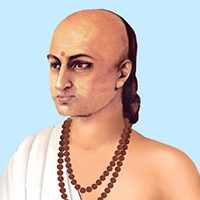Brahmagupta
Brahmagupta was an Indian mathematician and astronomer.He made advances in astronomy and most importantly in number systems including algorithms for square roots and the solution of quadratic equations.
Born: 590 AD, Bhinmala, Rajasthan, India, ruled by the Gurjara dynasty.
Died: 668 AD, India
Brahmagupta, one of the most accomplished of the ancient Indian astronomers. He is the author of two early works on mathematics and astronomy: the Brāhmasphuṭasiddhānta, a theoretical treatise, and the Khaṇḍakhādyaka, a more practical text. Brahmagupta was the first to give rules to compute with zero. He also had a profound and direct influence on Islamic and Byzantine astronomy.
Brahmagupta was an orthodox Hindu, and his religious views, particularly the Hindu yuga system of measuring the ages of mankind, influenced his work. Brahmagupta was born in Gurjaradesa. He lived and worked there for a good part of his life. Bhillamala was the capital of the Gurjaradesa, the second-largest kingdom of Western India, comprising southern Rajasthan and northern Gujarat in modern-day India. It was also a centre of learning for mathematics and astronomy. He became an astronomer of the Brahmapaksha school, one of the four major schools of Indian astronomy during this period. He studied the five traditional Siddhantas on Indian astronomy as well as the work of other astronomers including Aryabhata I, Latadeva, Pradyumna, Varahamihira, Simha, Srisena, Vijayananda and Vishnuchandra. He severely criticised Jain cosmological views and other heterodox ideas, such as the view of Aryabhata (born 476 AD) that the Earth is a spinning sphere, a view that was widely disseminated by Brahmagupta’s contemporary and rival Bhaskara I.
Later, Brahmagupta moved to Ujjaini, Avanti, which was also a major centre for astronomy in central India. Brahmagupta became the head of the astronomical observatory at Ujjain which was the foremost mathematical centre of ancient India at this time. Outstanding mathematicians such as Varahamihira had worked there and built up a strong school of mathematical astronomy.
Brahmagupta’s fame rests mostly on his Brahma-sphuta-siddhanta (628; “Correctly Established Doctrine of Brahma”), an astronomical work that he probably wrote while living in Bhillamala, then the capital of the Gurjara-Pratihara dynasty. It was translated into Arabic in Baghdad about 771 and had a major impact on Islamic mathematics and astronomy. Late in his life, Brahmagupta wrote Khandakhadyaka (665; “A Piece Eatable”), an astronomical handbook that employed Aryabhata’s system of starting each day at midnight.
In addition to expounding on traditional Indian astronomy in his books, Brahmagupta devoted several chapters of Brahma-sphuta-siddhanta to mathematics. In chapters 12 and 18 in particular, he laid the foundations of the two major fields of Indian mathematics, pati-ganita (“mathematics of procedures,” or algorithms) and bija-ganita (“mathematics of seeds,” or equations), which roughly correspond to arithmetic (including mensuration) and algebra, respectively. Chapter 12 is simply named “Mathematics,” probably because the “basic operations,” such as arithmetic operations and proportions, and the “practical mathematics,” such as mixture and series, treated there occupied the major part of the mathematics of Brahmagupta’s milieu. He stressed the importance of these topics as a qualification for a mathematician, or calculator (ganaka). Chapter 18, “Pulverizer,” is named after the first topic of the chapter, probably because no particular name for this area (algebra) existed yet.
Among his major accomplishments, Brahmagupta defined zero as the result of subtracting a number from itself and gave rules for arithmetical operations among negative numbers (“debts”) and positive numbers (“property”), as well as surds. He also gave partial solutions to certain types of indeterminate equations of the second degree with two unknown variables. Perhaps his most famous result was a formula for the area of a cyclic quadrilateral (a four-sided polygon whose vertices all reside on some circle) and the length of its diagonals in terms of the length of its sides. He also gave a valuable interpolation formula for computing sines.
He also gives arithmetical rules in terms of fortunes (positive numbers) and debts (negative numbers):-
A debt minus zero is a debt.
A fortune minus zero is a fortune.
Zero minus zero is a zero.
A debt subtracted from zero is a fortune.
A fortune subtracted from zero is a debt.
The product of zero multiplied by a debt or fortune is zero.
The product of zero multipliedby zero is zero.
The product or quotient of two fortunes is one fortune.
The product or quotient of two debts is one fortune.
The product or quotient of a debt and a fortune is a debt.
The product or quotient of a fortune and a debt is a debt.
Brahmagupta then tried to extend arithmetic to include division by zero:-
Positive or negative numbers when divided by zero is a fraction the zero as denominator.
Zero divided by negative or positive numbers is either zero or is expressed as a fraction with zero as numerator and the finite quantity as denominator.
Zero divided by zero is zero.
The mathematician Al-Khwarizmi (800–850 CE) wrote a text called al-Jam wal-tafriq bi hisal-al-Hind (Addition and Subtraction in Indian Arithmetic), which was translated into Latin in the 13th century as Algorithmi de numero indorum. Through these texts, the decimal number system and Brahmagupta’s algorithms for arithmetic have spread throughout the world. Al-Khwarizmi also wrote his own version of Sindhind, drawing on Al-Fazari’s version and incorporating Ptolemaic elements. Indian astronomic material circulated widely for centuries, even passing into mediaeval Latin texts.

Brahmagupta
Date of Birth: 13 Nov 2025
Birth Place: 590 AD, Bhinmala, Rajasthan
Proffession: mathematician and astronomer
Nationality: India
Death: 668 AD, India


